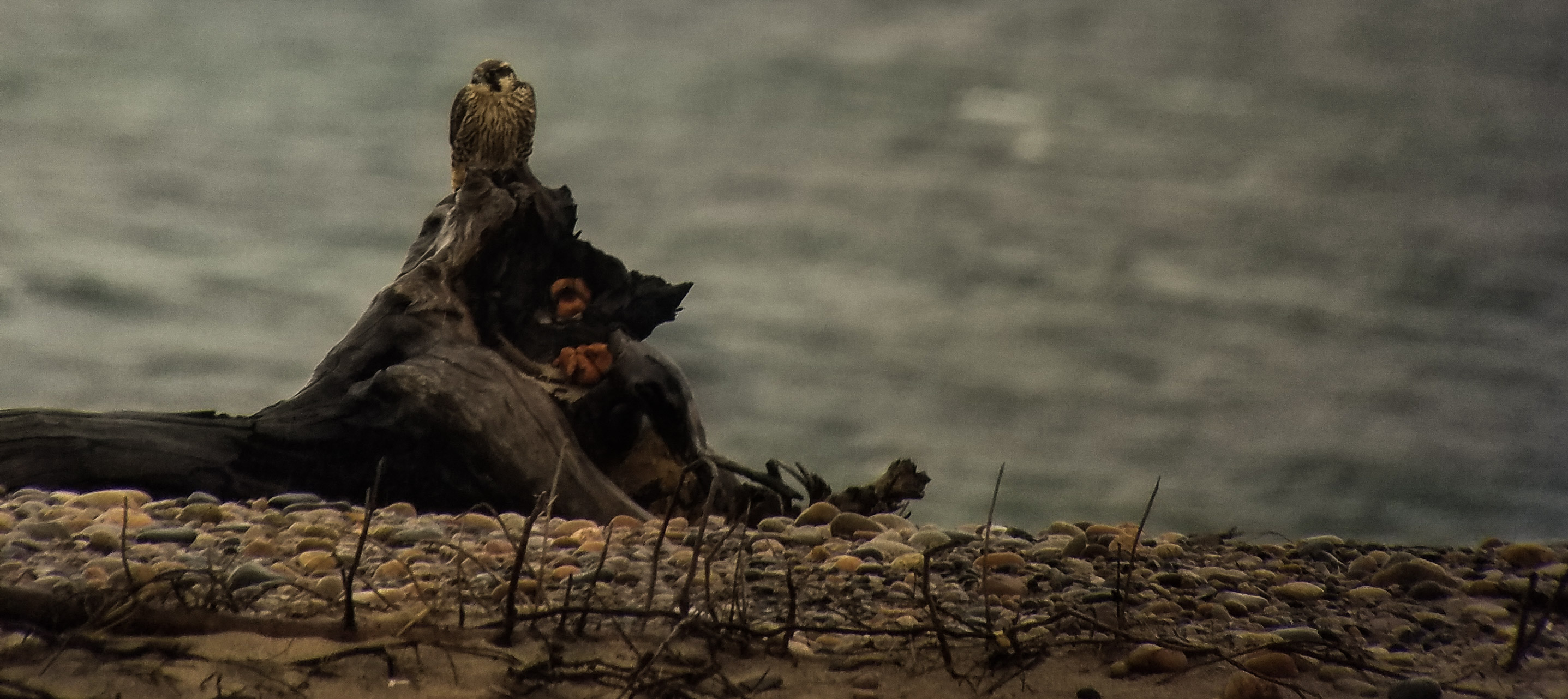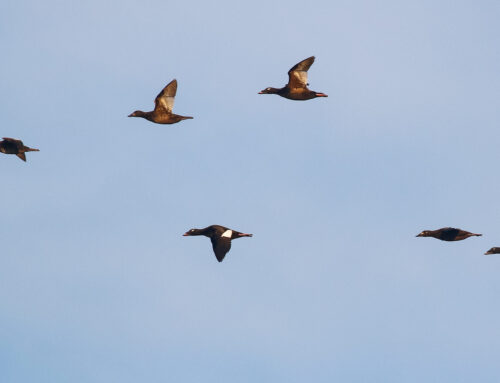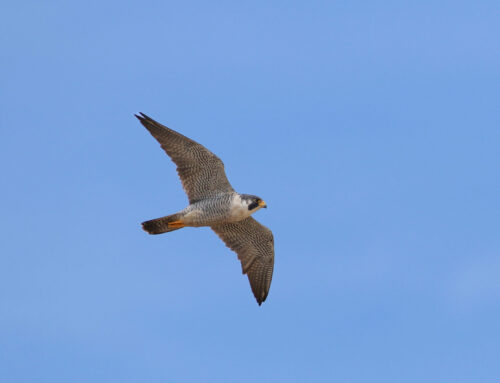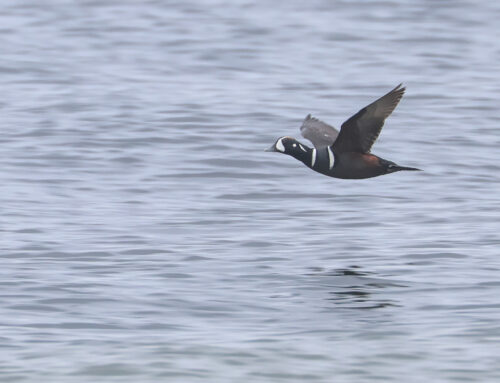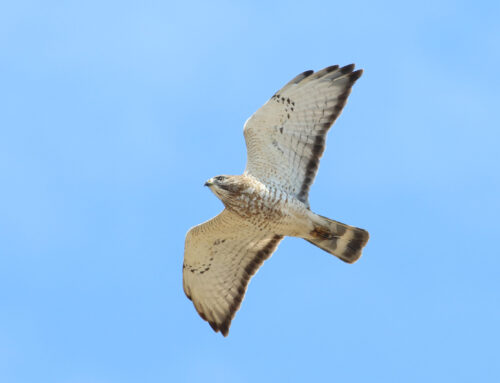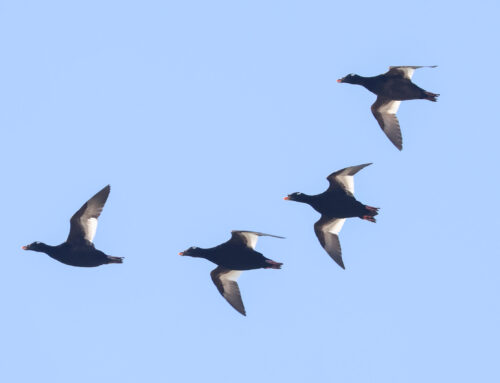Visible migration must be one of the more beautiful, raw phenomena of this world, and the past week at the waterbird count has provided frequent opportunities to appreciate it. This is a welcome departure from 8-hour loops of occasional, heat-distorted Red-necked Grebes that defined many days in early September!
The energy accompanying fall migration is a different strain than spring’s. At Whitefish, the spring passage is defined by tight, vocal packs of Bonaparte’s Gulls and Whimbrel flashing north. Then, the motivator is to return to breeding grounds, to create a new generation. But in fall, winter’s hardships loom on the horizon. The prospect of death–rather than new life–drives birds back south.
Fall migration feels lean and ragged–hungry, like the young Peregrine clumsily hunting yellowlegs in the pond near the tip. Like the dozens of weary passerines that come in low over the swells, running a gauntlet of hungry gulls and falcons before reaching the woods’ refuge. I find it hard to decide who to root for.
But fall migration is beautiful, too. The troubled skies of a northwest wind–squally and sunny and sometimes both–often fill with skeins of geese and scatterings of loons; last Monday, September 23, I stood beneath a ceiling of birds riding the north wind south. In a world where we’re increasingly separate from instinct, I find it impossible to not be moved by watching another species following those ancient urges. Standing there, caught up in the beauty and magnitude of the migration, was a surprisingly emotional moment.
That day, over 1500 Canada Geese and 420 Common Loons passed over the Point. On Thursday (26 Sep), we saw a strong duck movement, with American Wigeon (557) being the most numerous. (Over 1200 wigeon were tallied this week!). Aythya and scoters are gaining momentum, too.
Other highlights from the waterbird count this past week include: Snow Geese (a single bird with a large flock of Canadas on 23 September, and 2, again with Canadas, on 28 Sep); distant jaegers on 24 and 25 September; a Dickcissel on 25 September, and a Black-backed Woodpecker 28 September. A strong storm system a week ago Sunday was accompanied by a juvenile Arctic Tern, 2 American White Pelicans, the season’s first Harlequin Duck, and a Parasitic Jaeger.
—Alison Vilag, WPBO Waterbird Counter
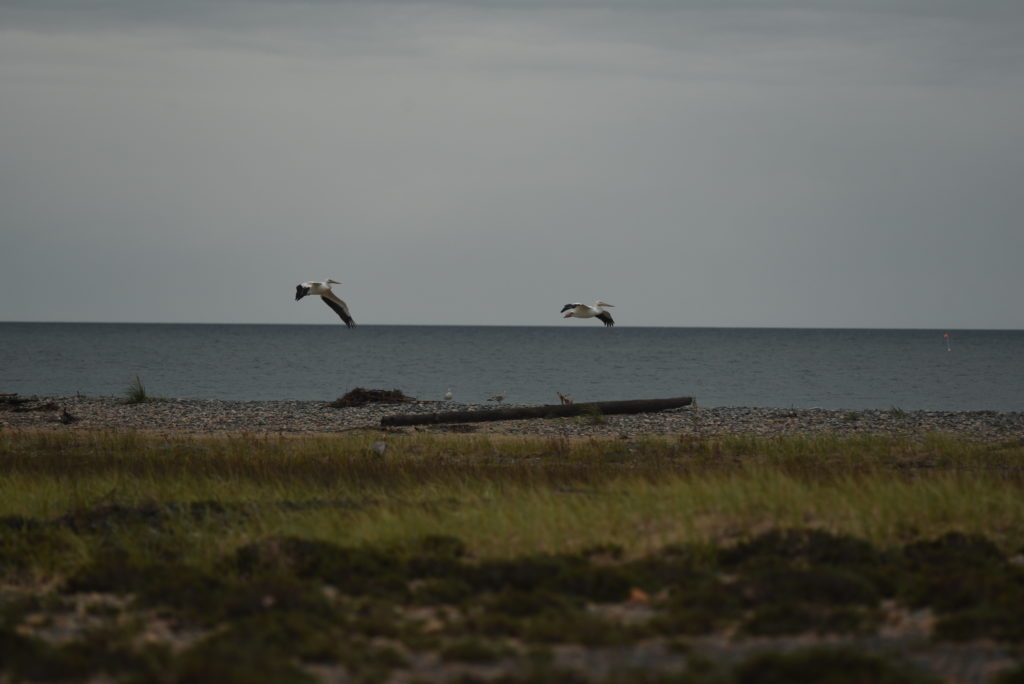
American White Pelicans seen during the 22 September WPBO Waterbird Count. Alison Vilag photo.
(Feature Image: Peregrine Falcon/Alison Vilag photo)

